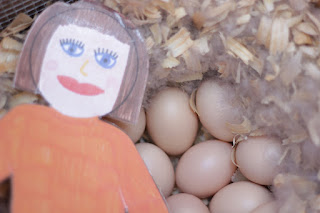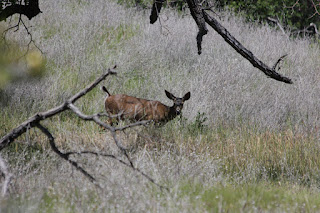Dear Friends,
I cannot wait for you to hear all about my visit to a Northern California Hunting and Fishing Business! I know that you are probably wondering what hunting and fishing have to do with agriculture, but believe it or not, they are very much interconnected! I had a great time with the family that operates this business, especially the two kids; Cade who is in 1st grade too and his little sister Quinn who is in Kindergarten! Cade and Quinn loved showing me around their home, introducing me to all their animals! I even got to spend a couple days with their Dad, Casey and Mom, Regina, visiting all the ranches that they take care of.
Casey and Regina take care of several different pieces of land. They are called land managers. Both Casey and Regina went to college and studied Agriculture. They learned about farming and ranching, but decided to do something a little different with what they learned. They taught me a new word. That word was “Conserve”. Regina says the word conserve means to protect and keep safe, to preserve and not destroy. Casey and Regina work hard every day to conserve wildlife habitat and fish populations on the properties that they take care of. Many of the properties that they manage are farmed for crops or grazed by livestock and these properties are also used for hunting and fishing. This picture shows a piece of property that used to be a rice farm. Because the soil here was not very good, it didn’t grow rice very good. So Casey and Regina changed it into a Wetland Habitat.
Just this past spring, they planted these baby willow trees, called cuttings, all around the property. When the trees grow big they will make a natural wall to block out the commotion made from the farming that is happening on the fields surrounding this wetland.
Even though this wetland is brand new and lots of work still needs to be done to make it a natural habitat, all kinds of birds were already enjoying it! I saw lots of black ducks called coots out there, a sand piper bird, and even a nesting mallard duck.
Casey and Regina take care of a much larger and older wetland too. This wetland also has a section called an upland habitat. This property was also at one time a rice farm. Many farmers are paid money by the government to take their land out of farming production and make them into wetlands. These deals are called Conservation Easements!
Casey and Regina help those farmers to keep their end of the deal by taking care of the property and making sure that certain native grasses are planted, trees are planted, water is flowing and that weeds and other non helpful plants don’t take over the property. That way there is plenty of good food for the waterfowl and upland game birds that live there. Casey has built a ton of wood duck nesting boxes that he has put all over this wetland. You can see them in the picture below.
These nesting boxes are used by momma wood ducks to lay on their eggs until they hatch. Because so many trees have been removed from fields all over the Sacramento Valley, wood ducks lost their nesting places and they weren’t having as many babies. Farmers now put up these boxes and now wood ducks are starting to do well again.
Casey checks his boxes to make sure there are no wasps; he also puts wood chips in the bottom so the ducks are comfy. This duck was lying on her eggs when we got to her box. Many of the boxes had almost a dozen eggs each! That’s a lot of baby ducks if they all hatch!
There are so many rice fields around here! There are lots of other crops too, but rice fields are everywhere you look! Casey told me that rice fields are great places to hunt for ducks and geese. In the fall, after the rice grain is harvested from the field, the stem of the plants called rice straw is left behind. There isn’t much use for rice straw, so farmers used to just burn the straw out of the fields by lighting it on fire. Now rice field burning is limited to a small amount every year, because of the pollution from the smoke. So farmers have to mow the straw really short and then disc it into the fields. Then they flood the fields with water which helps break down the straw and make it soft and mushy to put back into the soil so they can plant rice again in the spring. The flooded rice fields in the winter attract migrating ducks and geese as they fly south for the winter. The birds stop at these fields to eat bugs, grass and the rice grain that was left behind. That’s why these fields are great hunting areas. Casey puts tanks into the field called duck blinds for his hunters to use. That way there is a nice dry place for the hunter to camouflage himself. He brought me along to watch one of these blinds being put into the field, while the ground was still dry and the before the rice was planted. A big backhoe digs a giant hole, and then lowers the blind into the ground. The dirt is then packed tight around the blind so it won’t pop out when the water floods the field around it. I thought this was pretty neat!!!
Casey says his dog Gauge lays right next to blind while he is hunting. When a shot is fired and a bird comes down, Gauge runs out into the water and retrieves it and brings it back to Casey so he never has to leave the blind the whole time he is hunting.
Casey and Regina also manage a ranch in the hills. This ranch is grazed for cattle, but it is primarily managed for the wildlife that lives on it. They spend a lot of time piling brush into big high piles for quail to live in. They also have planted wheat on the ranch for animals such as wild pigs and deer to eat. Doves and wild turkeys also like to eat the grain from wheat.
There are a lot of ponds that Regina and Casey have dug out and rain water fills them up during the winter. These ponds hold water all year long for the animals to drink from.
They have also put sun powered wells in a few spots on the ranch. Solar powered pumps have been set up in a few spots on the ranch too. These pumps are run by the energy from the sun and pump water from natural wells and springs into livestock water troughs. That way the cows drink from the troughs and not from the ponds.
Many times wild animals will not drink from ponds that have been muddied up by cows. It was really hot the day we went to the ranch and I wanted to jump in a take a swim!
We saw a Momma deer near a pond and Casey also showed me mud and rub marks on a tree trunk made by a big wild pig! They lie in the water and roll in the mud then get it off of their body by rubbing on a tree! We also checked all the trail cameras while we were up there and I got to see pictures of lots of animals coming and going to and from the pond!
When we got home, Cade and Quinn were so excited to show me a brand new liter of hunting dog puppies while I was there! Their dog Gauge is now a Dad and the Mom Splash was super nice and let me see her new babies! They are only one week old. They are Registered Black Labrador Retrievers!
I had a great time learning so much about a tiny part of the ag industry that most people don’t think about! Although I didn’t actually get to go out on a hunt, I still thought it was neat to learn about all this behind the scenes stuff.
See you guys back at school real soon!
Thanks Casey, Regina, Cade, and Quinn for the awesome adventure! My class loved seeing Flat Aggie's adventure. They were really excited to hear about the Mallard Duck since we spent the week learning about Mallards. Find CICC Outdoor Adventures on Facebook or visit their blog!

























No comments:
Post a Comment